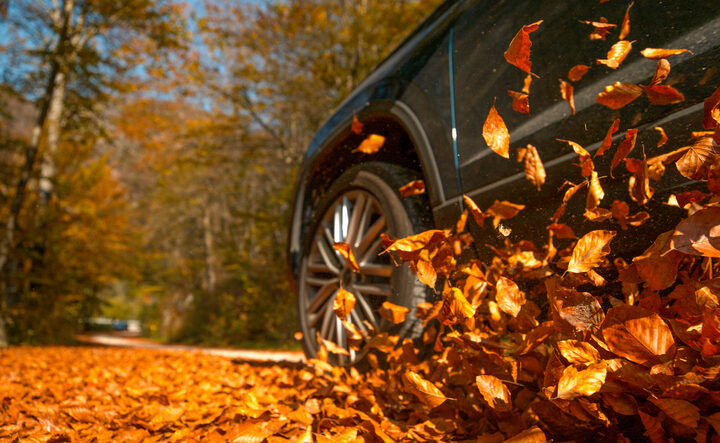California Motorcycle Helmet Law and Other Things to Know as a Motorcyclist
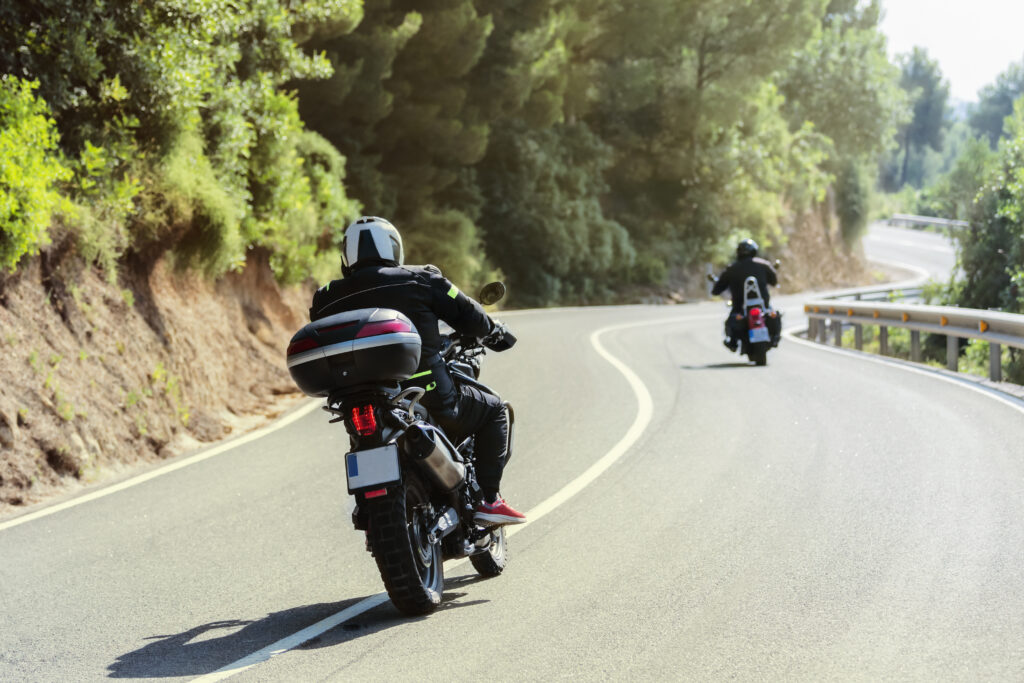
If you’re one of the more than 800,000 motorcyclists in California, today is your day! Every second Friday of July is National Motorcycle Day, a day to celebrate motorcycle culture, as well as promoting the safety of riding motorcycles. Before you rev up your engine and set out into the warm summer air, it’s important to know what laws govern motorcycle riders, including the California motorcycle helmet law. We’ll also take a look at the state’s license requirements and lane splitting laws.
You Must Have a Motorcycle License or Permit
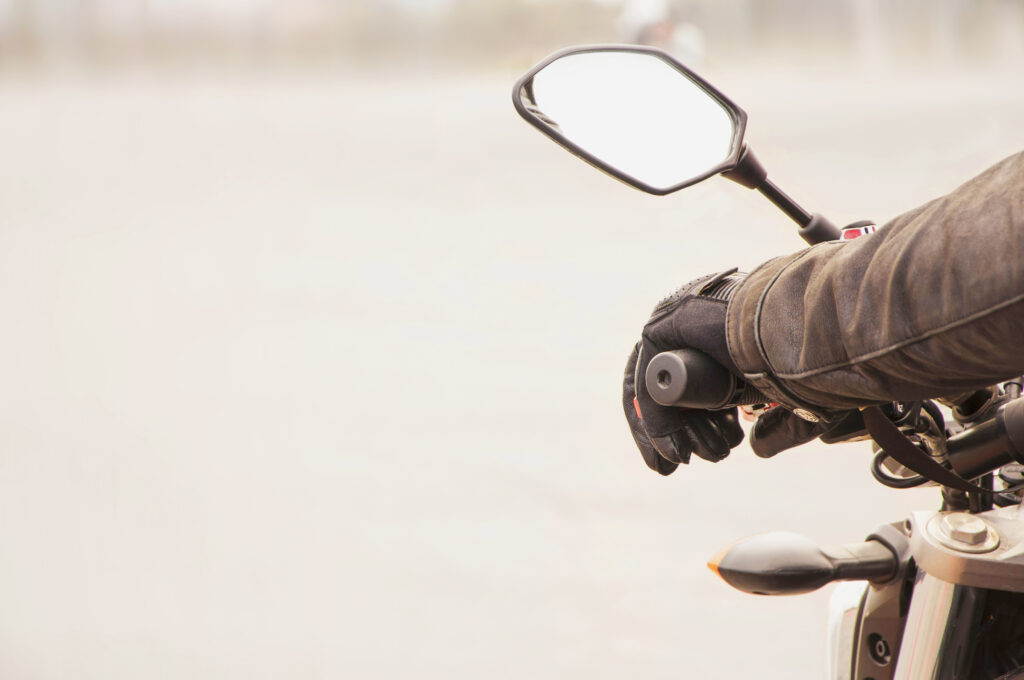
To ride a motorcycle legally in California, you need to have either a Class M1 license or a Class M2 license. A Class M1 license allows you to operate any type of motorcycle or motorized bike, while a Class M2 permit only allows you to operate a motorized bicycle, moped, or scooter. To get a license or permit, you need to pass a written test, a skills test, and a vision test at the DMV. You also need to complete a motorcycle safety course if you are under 21 years old. For a more detailed look into what is required to ride a motorcycle in California, check out the Motorcycle Driver Handbook.
California Motorcycle Helmet Laws
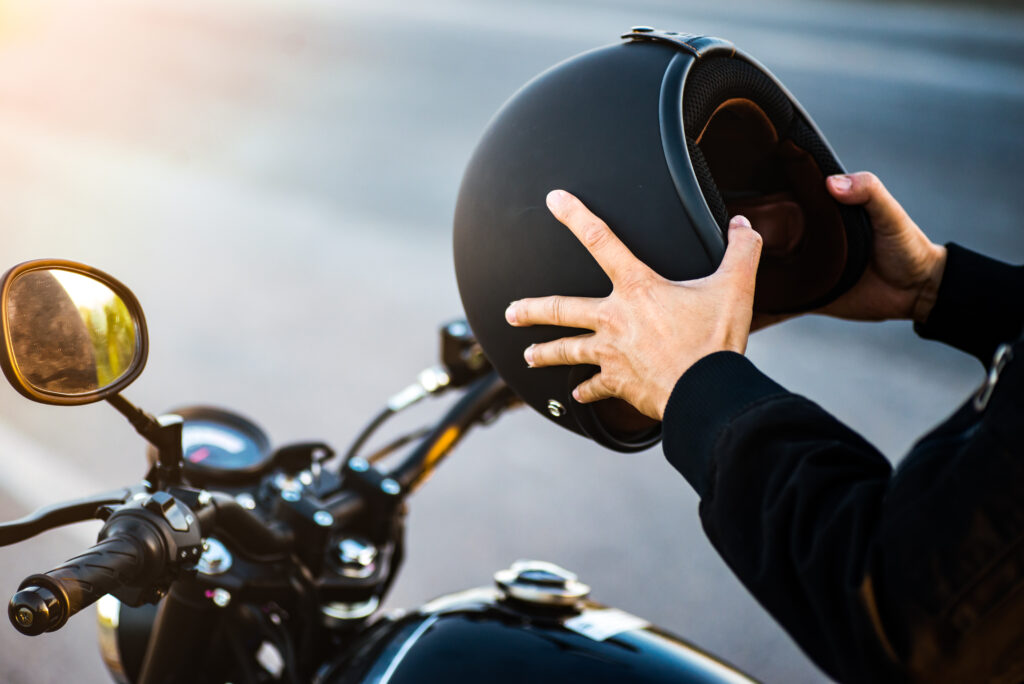
California is one of 19 states to implement a mandatory helmet law, which says that all riders and passengers must wear a Department of Transportation (DOT) compliant motorcycle safety helmet. The helmet must have a manufacturer-applied DOT lettering on the back of the helmet. Failure to wear a helmet under the universal helmet law could result in a fine of up to $250 and/or one year of probation.
California’s motorcycle helmet law took effect in January 1992, and has significantly reduced motorcycle injuries and fatalities. To know if your helmet falls under the DOT safety standards, it must have a DOT sticker on the back, fit snugly, have no obvious defects, and be securely fastened.
Lane Splitting Is Legal
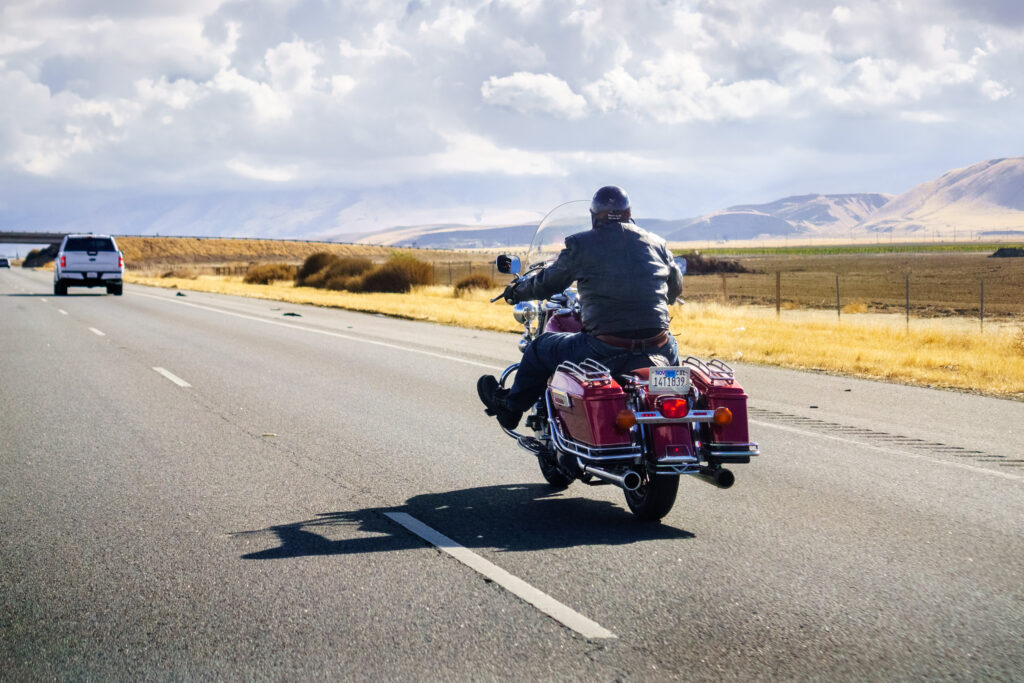
California is the only state to currently allow lane splitting, which is the practice of riding between lanes of traffic or sharing a lane with another vehicle. Lane splitting is generally considered a safe practice, but poses serious risks, too. Lane splitting is not recommended for inexperienced riders and at higher speeds.
The California Highway Patrol (CHP) recommends that you avoid lane splitting when traffic is moving faster than 30 mph, when the speed difference between you and other vehicles is more than 10 mph, when there are dangerous road conditions, or when you cannot fit safely between vehicles. It is also important to know that riding on the shoulder is illegal.
Follow the Rules of the Road
Motorcyclists have the same rights and responsibilities as other drivers on the road. As a rider, you need to obey traffic signs and signals, speed limits, lane markings, and other rules of the road. Use your turn signals, headlights, horn, and mirrors properly. Always maintain a safe distance from other vehicles, avoid blind spots, and be alert for hazards. Motorcyclists also should carry proof of insurance, registration, and license at all times.
Safety Tips for Motorcyclists
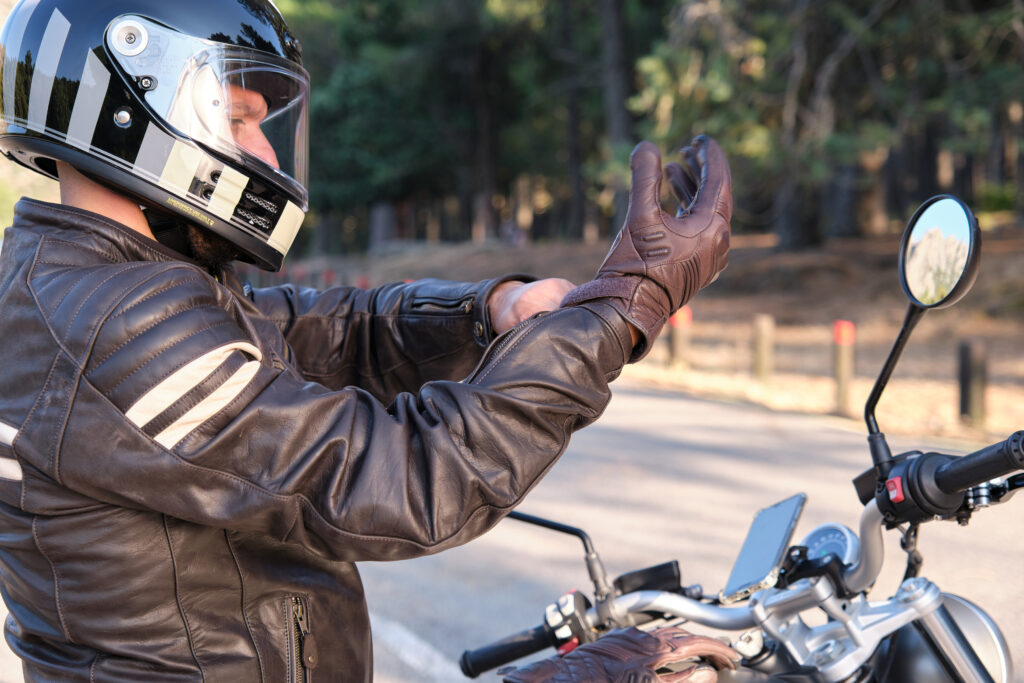
With a proper motorcycle license, helmet use, and understanding of the local laws and regulations, you are prepared to set out and enjoy your ride. But before you do, keep these safety tips in mind:
1. Wear a motorcycle helmet and protective gear
A motorcycle safety helmet is the most important piece of equipment you can wear as a motorcyclist. Wearing a helmet can reduce the risk of head injuries by 65 to 88% and increase the chances of survival by three times in a crash. You should also wear protective clothing, such as a leather or long sleeve jacket, long pants, gloves, and boots, to prevent injuries from road rash, debris, or weather. In summer, you should wear lightweight and breathable clothing to protect you from sunburn and other injuries.

2. Be visible and predictable
One of the biggest dangers for motorcyclists is not being seen by other drivers. Motorcycles are much smaller and narrower than cars or trucks, which makes them harder to spot in traffic or at intersections. To increase visibility, wear bright or reflective clothing, use headlights at all times, and avoid riding in vehicle blind spots. You should also avoid weaving in and out of traffic or making sudden movements. Be predictable and communicate your intentions clearly with other drivers.
3. Check your bike before you ride
Before you hit the road, you should inspect your motorcycle for any defects that could affect performance or safety. Motorcyclists typically need more frequent maintenance than regular passenger vehicles. Check your tires, wheels, fluids, brakes, lights, horn, mirrors, and controls. Make sure everything is in good working order and adjusted to your preferences. If you notice any problems, fix them or have them fixed by a professional before you ride.
Call a Motorcycle Accident Lawyer If You Were Injured

Motorcycle accidents are a scary and unfortunate reality that all motorcyclists must prepare for. Motorcyclists face high injury or death risk in crashes. If you or someone you know was injured after a motorcycle crash, our experienced lawyer can help you recover financial compensation from the at-fault party. We will help you understand California motorcycle helmet laws and other rules that apply to you.
Our personal injury law firm in Rancho Cucamonga has helped countless motorcycle accident victims get back on track after a serious injury. Let us help you during this difficult time, and at no upfront cost. Call us at (909) 942-7632 to set up a free consultation.

